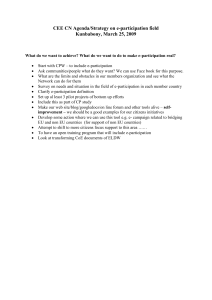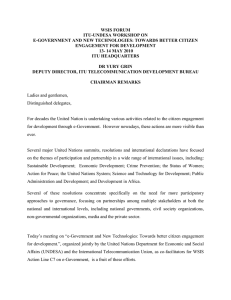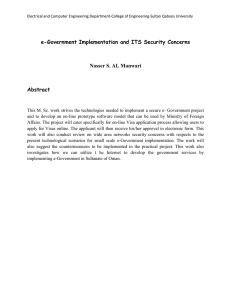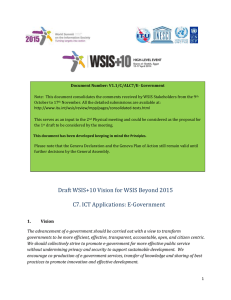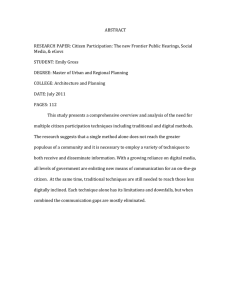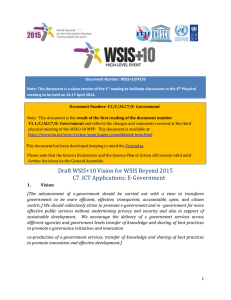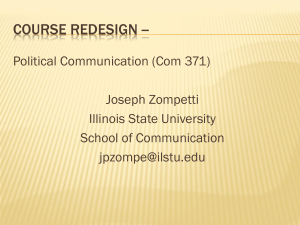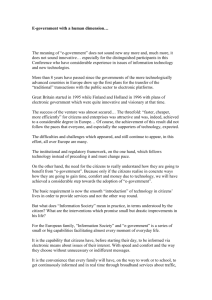e-Government and New Technologies: Towards better citizen engagement for development
advertisement
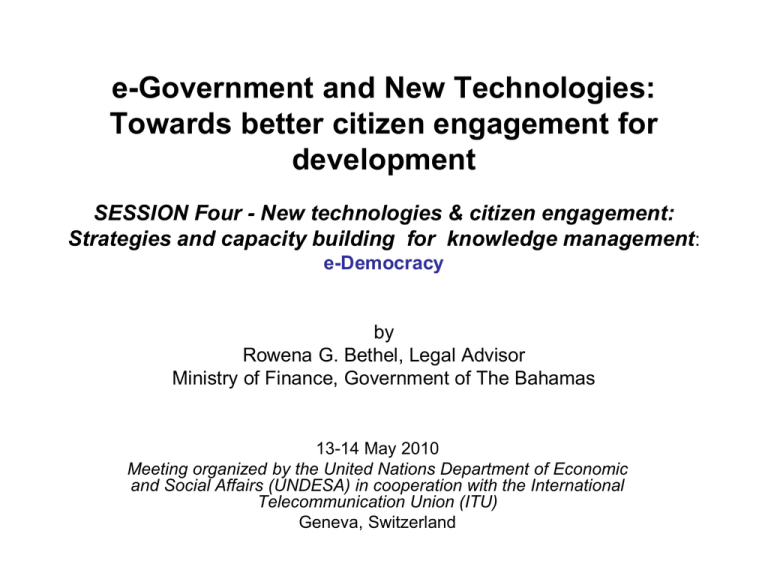
e-Government and New Technologies: Towards better citizen engagement for development SESSION Four - New technologies & citizen engagement: Strategies and capacity building for knowledge management: e-Democracy by Rowena G. Bethel, Legal Advisor Ministry of Finance, Government of The Bahamas 13-14 May 2010 Meeting organized by the United Nations Department of Economic and Social Affairs (UNDESA) in cooperation with the International Telecommunication Union (ITU) Geneva, Switzerland Citizen Engagement • “the process of involving citizens in the development of public policy in a way that affords interactive and iterative deliberations among citizens and their government”; • citizens move from being mere spectators to being actors. 2 Important prerequisites • Make information available regarding public administration, its processes and policies; • Provide meaningful avenues and opportunities to engage with the public ‘channels of communication’; • Maintain an interactive and iterative dialogue as matters progress through to their final outcomes. • An e-government platform that has addressed and implemented a back office knowledge management framework to support online information and services, applications and tools to interactively engage with users. 3 What about the plight of lower income economies? Challenges faced by lower income economies are primary barriers to the levels of empowerment desirable to improve the status of these countries and their citizenry and ensure that “the requirements needed to serve the collective interest in the 21st century are met, i.e. an effective public sector, an efficient private sector, a dynamic civil society and an active citizenry.”* * Presentation by Hon. Jocelyne Bourgon P.C., O.C. (Canada) to the OECD public Governance Committee Symposium on “Open and inclusive policy making held 16 October 2007 at OECD, Paris. 4 Trends in e-government programmes to advance citizen engagement • E-democracy encompasses the harnessing of online tools to facilitate and support participation by the citizenry in public life and public governance. • Web 2.0 applications allow for information sharing and peer-to-peer collaboration e.g blogs, discussion fora, chatrooms, social networking sites such as FaceBook, Twitter and Youtube • Prolific use of the WWW for political campaigning 5 Engaging the youth in democracy • In 2004, reported that 20% of youth in the US rely on the Internet as their main source of political campaign news. • In 2009, the Obama Campaign in the US successfully used multimedia tools to manage the campaign, realising that in order to engage the youth of the nation they had to utilise the youths’ ways of communicating. 6 UN e-government survey 2010 and e-participation • E-participation is the area of online services that opens up channels for online participation in public affairs such as e-information, e-consultation and e-decision making. • E-participation remains in a nascent state in many countries. • E-participation is seen as a means of “enhancing the effectiveness of Governments by allowing them to respond to the needs of citizens in a more direct manner”. 7
